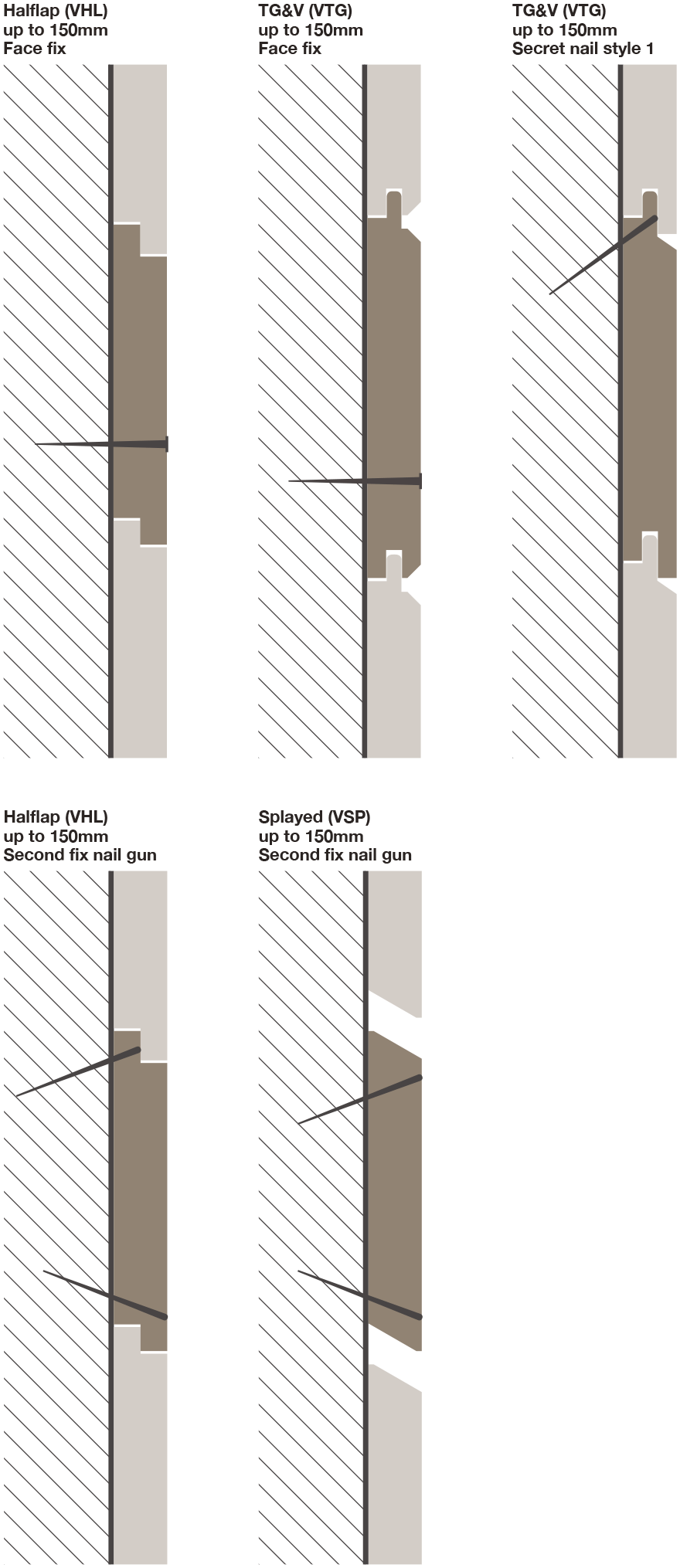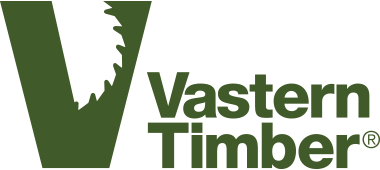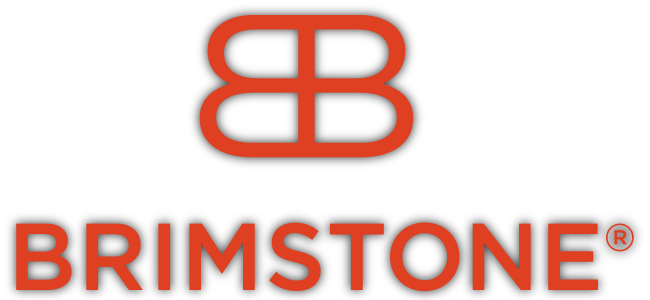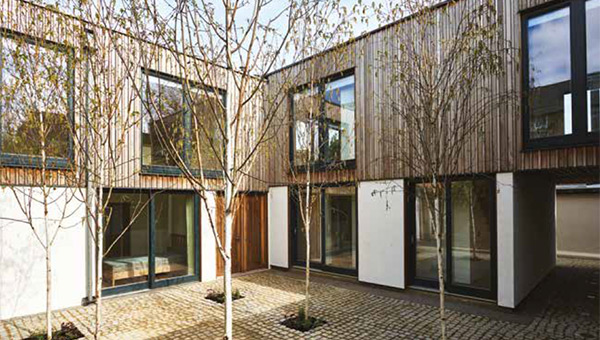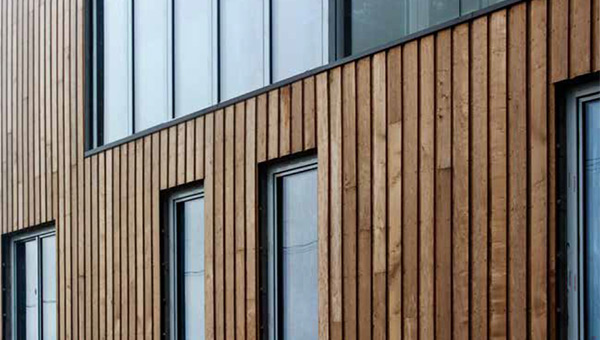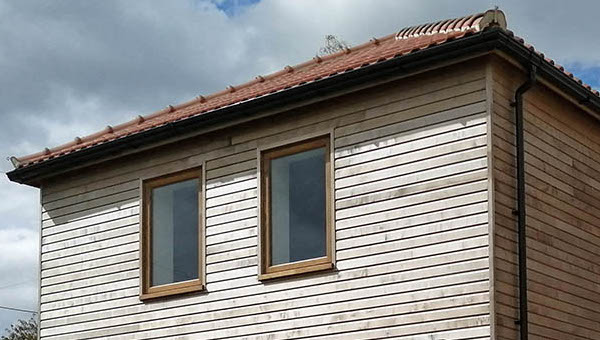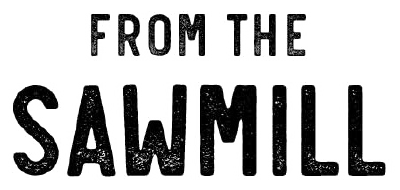Buying Brimstone Cladding
Beautiful, versatile and modified to last, Brimstone is a new breed of thermally modified British wood for external timber cladding. Sourced from woodlands across Britain, Brimstone is heated to 210 degrees, creating cladding that is very durable, stable, and visually attractive.
If you are looking for a relatively knot-free hardwood cladding with a refined appearance and local provenance, Brimstone is for you. Brimstone combines function and quality along with the wider benefits of local purchasing and support for native woodlands.
Google Reviews
Brimstone Cladding Features
Thermal modification is a simple but effective process that changes the cell structure of the wood by heating it up to 210°C. This natural, toxin-free method removes moisture, resin and other extractives. The result is a more durable, stable and consistent material – with less risk of bending, warping or decay.
Perhaps most importantly, to produce Brimstone we use the UK’s own fast-growing hardwood species, increasing the demand for UK wood and helping to regenerate the woodlands we all know and love.
The Brimstone cladding range includes three options, thermally modified ash, sycamore and poplar. All three are available in a range of widths and machined cladding profiles.
Call us to discuss your cladding project
Find Out More
RESOURCE CENTRE
Introducing Brimstone, the British grown, thermally-modified timber cladding.
Know what you want?
Performance
One of the most impressive outcomes of thermal modification is improved stability. Wet or dry, hot or cold, the amount of shrinkage and expansion in the Brimstone cladding will be relatively small compared to other cladding choices. Improved stability means less shrinking, cupping and distortion of the cladding, which in turn means smarter cladding for the long term.
The second key advantage of thermally modified wood is that we can use local wood species that would normally rot when left outside (non-durable) and turn them into products that will last for many decades untreated. All Brimstone products have achieved the highest durability rating of Class 1, indicating a minimum expected life span of thirty years when used as cladding above ground.
Like other thermally modified timber cladding, Brimstone products are an attractive brown walnut colour. The colour is relatively consistent, but it is unstable, and it will fade quickly when exposed to the elements. As with other timbers, you can slow the weathering process by applying appropriate coatings. Our favourite coating for Brimstone is OSMO Natural Oil Wood stain 708.
The one down side of thermally modified wood is its inherent brittleness. Brimstone is more brittle than natural timbers and care should be taken when handling and installing the cladding boards. Once the cladding boards are installed, this characteristic is no longer an issue.
Brimstone
Cladding Profiles
Brimstone is best suited to smooth machined cladding profiles. The most popular profiles for Brimstone are those that create clean lines with defined shadow gaps such as our halflap cladding profiles VHL4 and VHL6.
Because Brimstone is so stable it is suited to tongue and groove profiles including those designed for hidden fixings. Profiles VTG6 and VTG5A are favourites for hidden fixings.
Cladding boards are normally available in widths of 70mm, 95mm, 120mm and 145mm. The standard thickness of cladding boards is 20mm.
Call us to discuss your cladding project
How and when to fix your Brimstone cladding
Brimstone cladding boards can be installed vertically or horizontally but be sure to select the appropriate profile. Vertical cladding will require a double battening system, while horizontal cladding only requires a single set of battens. You can screw or nail Brimstone cladding boards but in all cases use stainless steel fixings to avoid bleeding.
Because Brimstone is relatively brittle, please take care when handling the boards. These Cladding boards will snap and split more easily than normal timber if treated roughly. Also, be careful when nailing or screwing Brimstone cladding boards. Always pre-drill if hand nailing and if screwing be sure to countersink the pilot hole.
We do not recommend that you use first fix nail guns. In part because the nail heads look ugly and in part because the large nails are likely to split these boards, particularly at the ends of the board. For a fast fixing method with discreet nails, we have tried and tested the use of a second fix nail gun. At each batten, insert two nails at opposing angles, one in the tongue or lap and one in the face of the board. The exposed nail head becomes almost invisible as the wood weathers.
For all fixing methods we recommend the inclusion of an expansion gap of at least 2mm to allow for movement through the year.
Being relatively stable Brimstone cladding can be fitted at any time of year.
We can supply the correct fixings with your cladding.
